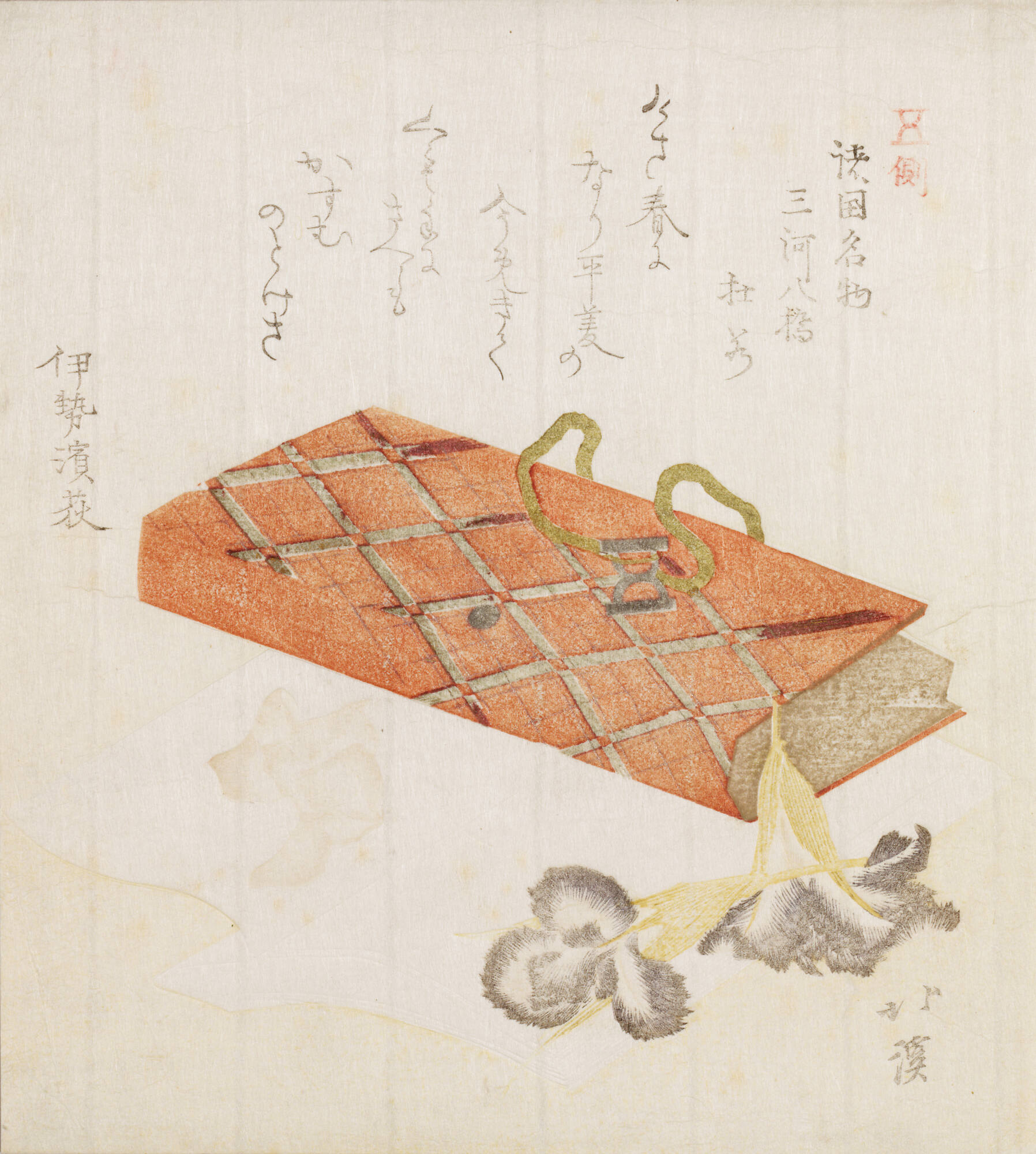Totoya Hokkei
(Japanese, 1780–1850)
The Irises of Yatsuhashi, Mikawa (Mikawa yatsuhashi kakisubata), from the series: Famous Products of the Various Provinces

Object Details
Artist
Totoya Hokkei
Date
commissioned for a New Year, ca. 1810s
Medium
Color woodblock print
Dimensions
8 3/16 x 7 3/8 inches (20.8 x 18.7 cm)
Credit Line
Gift of Joanna Haab Schoff, Class of 1955
Object
Number
2011.017.016
Commissioned by the Group of Five (Go-gawa) for a New Year, ca. 1810s Kesa haru ni This morning it(…)
Commissioned by the Group of Five (Go-gawa) for a New Year, ca. 1810s Kesa haru ni This morning it became spring Narihira-bishi no And “Narihira diamonds” Ima mekite Are all the rage Kumode ni sae mo Now even the branching walkways Kasumu nodokesa Are covered in misty peacefulness —Ise no Hamaogi The subtitle of this print refers to The Tales of Ise, in which the anonymous hero, popularly said to be the dashing courtier Ariwara Narihira, visits an area called Yatsuhashi (“Eight Bridges”), a place where a river branched into eight channels, each with a bridge with irises growing beneath. It was here that Narihira supposedly composed his famous kakitsubata (“iris”) acrostic poem, an event taken as the source for the no drama of this name. The Narihira-bishi mentioned in the verse was a popular diamond pattern for cloth, especially men’s kimono, and appears on the pouch for writing paper in the image. The pattern is based on both the crisscrossing lines, like the eight bridges of Yatsuhashi (also referred to as kumode, or “spider’s legs”) and the concept that the playboy Narihira was the ultimate expression of the “diamond,” or male principle, which pairs with the female womb principle in esoteric Buddhism. This image focuses on the nostalgic aspects of the classical romance, with its faint image of the iris impressed on the folding paper. The poem, relying on a traditional poetic trope that compares mist to nature’s robes, sees the popular “Narihira diamond” pattern on the patchy spring mists, spreading out in all directions. Kumode can refer specifically to the eightfold bridges of Yatsuhashi, but also more generally to something widespread, including nervous, scattered thoughts, which are set at ease at the New Year. There is also a pivot on haru ni nari (“it becomes spring”) and Narihira.












